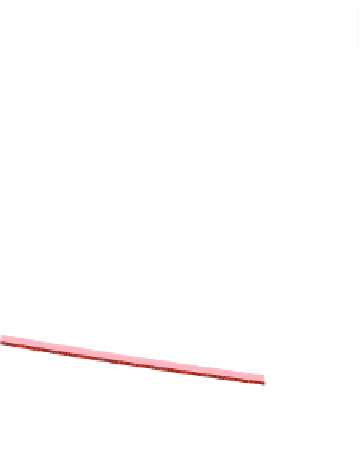Biomedical Engineering Reference
In-Depth Information
(a)
(b)
− EPCs, − MSCs
− EPCs, + MSCs
10
10
8
8
6
6
4
4
2
2
0
0
0
20
40
60
0
20
40
60
Time (days)
Time (days)
(c)
(d)
+ EPCs, − MSCs
+ EPCs, + MSCs
10
10
8
8
6
6
4
4
2
2
0
0
0
20
40
60
0
20
40
60
Time (days)
Time (days)
Fig. 5 Graphs showing how the radial cross section of the trachea changes with time during
regeneration, for different cell seeding strategies. The grey region is the cartilage ring where the
lighter shading indicates the presence of GAGs and the darker shading reveals its absence. The
pink region below the cartilage is the submucosa. The dark red colouring indicates the presence
of epithelial cells. In the title of each graph a '+' means the indicated cell type is used in seeding,
a'-' means that it is not
Table 1 The final amounts of stenosis of the trachea for the results shown in Fig.
5
, these being
the percentage decrease in the radius of the tracheal lumen over the 60 days simulation time i.e.
ð
R
l
;
0
R
l
ð
60
ÞÞ=
R
l
;
0
100 %
:
Results are shown for various seeding combinations: a '
U
' means
the indicated cell type is used in the seeding, a '
' means that it is not
Cell seeding
Stenosis
EPCs
MSCs
(%)
67
33
U
19
U
11
U
U
6 Discussion
This chapter describes the application of mathematical modelling techniques to the
study of regeneration of a tissue-engineered trachea in situ. A mathematical model

































































































































































































































































































































































































































































































































Search WWH ::

Custom Search